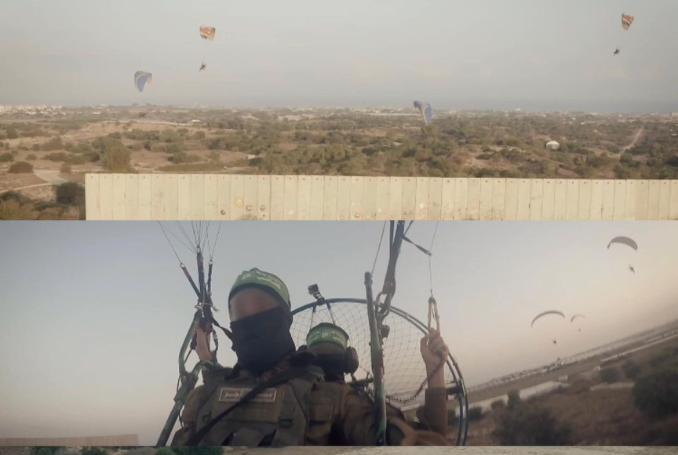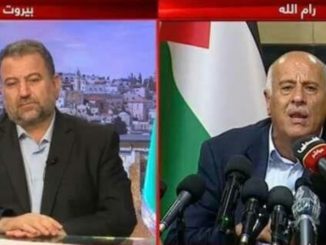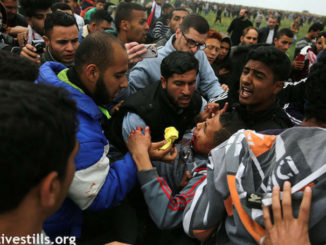
The Israeli military reportedly claims that Hamas spent “years of planning, drawing up detailed maps with the help of spies inside Israel ahead of the October 7 attack.” But is Tel Aviv telling the truth?
According to a report by The Guardian, this is the conclusion by the Amshat military intelligence unit after “it examined vast quantities of notebooks and documents seized from gunmen on the battlefield and in Gaza.”
The unit released a cache of material on Monday, including alleged “guides to hostage-taking and Arabic-to-Hebrew phrasebooks”.
Amshat Unit
The Amshat unit was reportedly reestablished after October 7, in order to understand “Hamas attack and defense plans, to gain operational intelligence and to better understand its doctrine.”
The operation by Hamas left, per Israeli official claims, 1,200 dead and 300 taken captive by Hamas. Many of those killed and wounded were Israeli military personnel.
The Guardian states that “the latest disclosures underline how little Israel’s powerful security establishment understood Hamas’s capabilities prior to the attack” as well as “the sheer amount of signs or clues that were missed or discounted.”
Last week, the New York Times reported that Israeli officials had seen a 40-page blueprint for Hamas’ planned attack, but Israeli officials “had dismissed it as aspirational and ignored specific warnings.”
Among the documents recovered, according to the Guardian report, was a thorough map of an Israeli military base, “arguably more detailed than would have been required by the IDF itself.” Compiling such a map, the Guardian says, could only have been done using “inside knowledge” – almost certainly from a Hamas spy, quoting an Israeli intelligence source.
ISRAELI CHANNEL 12: The Iron Dome system attempted to intercept Palestinian missiles in the sky of Tel Aviv.
Eyewitnesses spoke of about ten explosions that rocked the city. Israeli ambulance teams were heading to locations in Tel Aviv where rockets had been reported.
FOLLOW… pic.twitter.com/94HBY0iTUN
— The Palestine Chronicle (@PalestineChron) December 5, 2023
‘Years of Planning’
The report adds that “the detail and sheer scale of the information found have led insiders to conclude that Hamas engaged in “years of planning” – an effort that the IDF and other Israeli intelligence agencies simply failed to take seriously as a threat.”
The report states that laptops and handwritten notebooks refer to Hamas plans to target military locations and key points in central Israel. This suggests “the group or some elements of it had aspirations to penetrate dozens of miles inside the country once its fighters were ordered to breach the wall” surrounding the Gaza Strip.
Apparently “Hamas fighters carried mobile phones with Israeli sim cards and walkie-talkies so they had more than one means of communication.” Items recovered included a radio transmitter with solar battery to maintain contact, for an extended period of time, the report adds.
One of the documents made public details “a plan to seize an IDF command post close to the Gaza border fence with two squads of soldiers, listing their weapons and roles and contains a careful hand-drawn map of the target location.” It was “originally handwritten but recovered from a laptop,” the report said.
Senior Hamas official, Osama Hamdan, highlighted the Resistance movement’s position regarding several issues on the 60th day of war. https://t.co/OnDQrujAAu pic.twitter.com/buZWUHnSQU
— The Palestine Chronicle (@PalestineChron) December 5, 2023
It adds that phones and laptops have also yielded “a welter” of videos, with one of it having shown “the relative ease with which a squad of fighters were able to blow open the Gaza wall with Israel near the Egyptian border.”
The Guardian further reports that while there were signs of careful preparation by Hamas, “Israel believes most of the Hamas fighters were kept in the dark ahead of the intended attack, and only told of the plan at the last minute.”
The footage reportedly taken from a GoPro camera carried by the fighter “follows the squad inside Israel for several hours, until the fighter is killed in a shootout” at a kibbutz close to the Gaza border.
The Guardian further reports that journalists who were on Monday shown the documents and other items recovered from Hamas “were asked not to describe the extra material too precisely – omitting information such as locations – for operational security reasons.”
Misleading Report?
“The Israeli story on what has taken place on October 7 does not hold much water,” Palestinian journalist and editor of the Palestine Chronicle Ramzy Baroud said, adding, “and not just because of the relentless campaigns of lies and deceit led by the Israeli government itself.”
“It makes little sense of why an operation that can only be described as genius from a military point of view would fail to pay attention to obvious details, which would allow Israeli investigators to paste together a near complete account of what has happened without having any access to insider information,” according to Baroud.
As expected, the Israeli military operation in Khan Yunis has turned out to be the most difficult as indicated by the latest reports from the battlefield.https://t.co/qxaqxcf0zE pic.twitter.com/hdt2AZX9ck
— The Palestine Chronicle (@PalestineChron) December 5, 2023
“The investigation also raises more questions, such as why would Hamas fighters carry with them papers that offer all the needed clues to Israel? And why ‘years of preparation’ failed to teach Hamas’ top commandos units basic Hebrew?”
Baroud concluded by saying that “these allegations serve a functional reason, which is to demonstrate to American and Western audiences that Hamas’ superior intelligence poses an existential threat to Israel, and to justify Israel’s ongoing genocide in Gaza.”
“The Hamas version of the story remains the most likely one: they struck several Israeli targets to take Israeli military men hostage and to exchange them for Palestinian detainees in Israel. The operation, however, evolved due to the fact that the Israeli army’s Southern Command simply fell apart.”
(The Palestine Chronicle)








